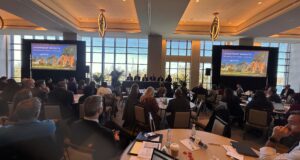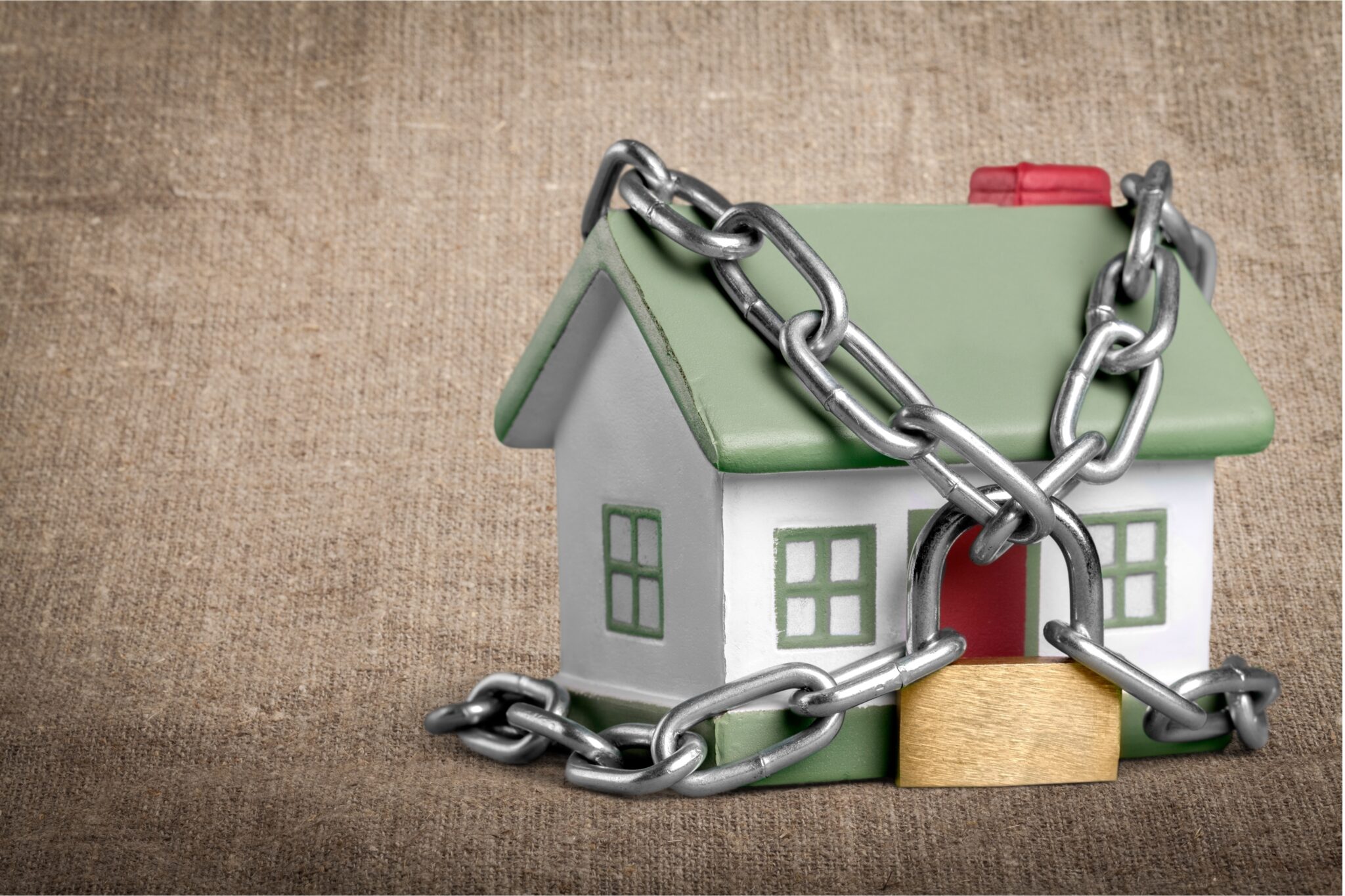The following is a print feature that first appeared in MReport's April 2015 issue, available now.
More than a decade ago, a quiet movement set afoot in lending, as financial institutions brainstormed the idea of streamlining the closing process using technology that allows borrowers to close on home loans with the push of a few computer keys.
Even then, it was clear the eMortgage and eClosing concept would take some time, but lenders, tech officials, and policy makers in the industry remained surprisingly unaware of just how long it would take.
The same industry is now heading into an era where a bank is foolish if it fails to embrace the idea of closing mortgages online or offering eMortgages sometime in the future. Failing to plan for this business practice equates to a bank sacrificing its future for a lack of competitiveness and transparency.
But the big push for eClosings and mortgages follows a period of acquiescence on the industry’s part. As practical as it seems to offer e-solutions for generations raised on computer technology, eClosings took some time to emerge as a fully integrated concept.
From Slow Starts to Industry-Wide Integration
The technology for eClosing has been around for a decade or more,” Bill Anderson, VP of Legislative Affairs for the National Notary Association, said. But getting this technology fully developed and the necessary regulations implemented took time. A few pit stops along the way didn’t help either, Anderson explained. “The industry began meeting on the eMortgage back in 2000,” Anderson noted. “There was a lot of momentum for eMortgages and closings, then the recession hit in 2008 and that stalled.”
Dan Green, a marketing lead for loan originations technology vendor Accenture Mortgage Cadence, remembers this uncertain time well.
Today, Accenture Mortgage Cadence has the luxury of knowing it’s one of a few tech vendors picked by the Consumer Financial Protection Bureau (CFPB) to participate in the agency’s threemonth eClosing pilot program (other vendors include DocMagic, Inc.; eLynx, Pavaso, Inc.; and Pierson Patterson, LLP).
During the pilot program (which just came to a close at the end of March), the CFPB in partnership with several chosen vendors and creditors examined how technology can improve and streamline the closing process.
These developments are great for the industry, but a long time coming and maybe a bit too late considering the decade-long brainstorm that preceded them. It all started with discussions about the legal ramifications of closing home loans online.
“There were a lot of questions about whether an electronically signed mortgage was a legal document,” Green noted. “That has very well been put to rest.”
In addition, the high foreclosure rate and delinquencies of the late oughts-decade put a damper on the emerging concept of eMortgages and closings.
“There was a great deal of interest going into 2008,” Green remembers when discussing the industry’s view on eClosings and what is now referred to as the digital mortgage.
“After the recession and what came with it, I would have thought lenders would have progressed much more quickly,” Green added.
Unfortunately, some lenders progressed and others became lost in the uncertainty of the market and a wait-and-see type of philosophy that caused them to drag their feet.
“Having been very close to a lender or two who have done this, it takes focus,” Green explained. “It’s not something that you decide to do today and then you do tomorrow. It takes 12 to 18 months to work through. It is technology, process, and people– each of these three factors have to play together and work together to make it happen.”
Lenders effectively using eMortgages and eClosing technology have one thing in common: persistence throughout market cycles.
When the industry took a turn for the worse in 2008, those who succeeded in the digital mortgage space refused to buckle under the pressure and abandon ship.
Even though there was great temptation to delay future technology projects when borrower activity slowed, lenders who have experience in eClosings today are the ones who kept going.
For those who survived, “it was clear even seven or eight years before they did this that they were going to do this,” Green explained. “If they stay focused on it through the natural cycles of the mortgage business—higher refi periods and then higher purchase periods—they got it done.”
Setting the Bar—The CFPB e-Closing Pilot
And getting it done is what should be on the minds of lenders since eClosings are not going away—they are instead becoming more common.
Blanco National Bank is one of the creditors chosen by the CFPB to participate in the three-month eClosing pilot program and study. Neal Brodbeck, SVP of mortgage banking at Blanco National Bank, agrees consumers are now more prone to expect digital solutions at closing.
“Consumers are generally not aware of the technology, but after they experience the eMortgage closing process, they love the ease, speed, and paper-saving technology,” Brodbeck explained.
Green with Accenture Mortgage Cadence agrees consumer demand will drive lenders into this digital mortgage generation—whether they want to be there or not.
“We have a new type of borrower—a new generation of borrowers with the millennial market,” he said. “They have grown up with technology; they have grown up online. They expect to do business electronically, and they don’t expect to fill out paper forms.”
Even with the final results of the CFPB study on eClosings not yet complete, the industry expects the final report will reflect on how eClosings improve the overall borrower experience.
“We expect the CFPB to conclude that eClosings are good for the consumer,” Anderson with the National Notary Association said.
But eMortgages are not just about attracting computer-savvy consumers. Green with Accenture Mortgage Cadence says the movement is also driven by demand for transparency, efficiency, and cost savings.
“It is not just that I can interact with my mortgage electronically,” he explained. “It provides greater transparency in the process. I can check my documents when I want to check, rather than making a phone call or asking a lender to call me back.”
And this transparency is key in accomplishing what the industry aims to do in the wake of the 2008 financial crisis—a period defined by a high rate of defaulting mortgages.
There is a general feeling borrowers who took on some of the troubled loans that defined this era lacked understanding of the exact loan terms and of their own ability-to-repay the debt. The CFPB itself noted in an announcement that the eClosing pilot program is about ensuring borrowers “better understand how educational materials like document summaries, term definitions, or process explanations can enhance borrower understanding during the process.”
Another benefit is the efficiencies eClosings and mortgages inherently drive.
“When you stop using paper, just the cost of paper alone is a fairly significant savings,” Green explained. “The cost of producing a loan has risen rather substantially over the last several years,” Green added. “It is just not sustainable, and this is one way of bringing the cost down.”
Brodbeck with Blanco National Bank says the tools not only save banks on costs, but on time as well. “The paperless closing process takes 15 to 20 minutes,” he explained. “Afterwards, we hand the borrower a flash drive containing the signed documents. They leave with a sense of accomplishment without the stress of mounds of paper.”
Even after closing, banks using a paperless process are still saving money, Brodbeck adds.
“First, the loan is purchased by our investor the same day of closing or the next, depending on the time of the closing. If we close a loan in the morning, it is common to receive the purchase wire before the end of the day. If you deal with warehouse lines, this could be a huge savings,” the lender explained.
“Second, because the file is fully vetted before closing and after all conditions have been cleared, post-closing conditions are eliminated. In the past four years of delivering eClosing loans to our investor, we have not received a single request to cure any postclosing conditions.”
The Challenge Ahead—Making Sure Emortgages Scale
Even with advancements made, the industry has nothing if the concept of providing eClosings and digital mortgages fails to scale. This means every market player from big lenders to small banks must have the capacity to partner with a tech vendor and other agencies to implement affordable solutions to offer eMortgages and closings.
“It is one of the adoption issues the industry is going to have,” notes Anderson with the National Notary Association. “eClosing cannot be for the top five big banks . . . to take off, everybody has to be able to do it.”
Blanco National Bank has been doing eClosings and eMortgages for the past four years. Brodbeck, who works on the lending side of the house, knows the challenges smaller banks—some of which are just now looking into this—face in getting started.
“Lenders will need to retool their upfront processes before closing, which will include a fully completed, approved file before ordering the closing documents,” Brodbeck explained. “This includes the survey, inspections, and the other last minute items generally sent to the title company the day of closing.”
While lenders who are behind on the implementation of eClosing programs need to catch up, there are plenty of solutions that make this concept scalable to all banks—no matter what size they come in, suggests Green with Accenture Mortgage Cadence.
“Ultimately, this is going to have to scale to all sizes,” Green noted. “If you want to be the lender of choice, you are going to have to offer the digital mortgage, because that is the way consumers and borrowers are going to have to interact with it. The technology to do that is easily accessible.”
A big game-changer for the industry turned out to be the CFPB’s decision to spend the first three months of 2015 studying eClosings and how technology can improve transparency and efficiencies during the closing process.
“Up until this point, it was the industry that was being the evangelists for eClosings,” Anderson with the National Notary Association asserted. “Now you have a major regulator coming in.”
Green with Accenture Mortgage Cadence expects the final survey released either in late spring or early summer to delve deeper into what efficiencies can be created. So far, he says “the borrower response to the survey has been good.”
Following the Letterof The Law
The CFPB is also interested in how errors can be prevented during the entire closing process. Having technology track each step creates a situation where digital solutions lift some of the regulatory burdens lenders face when trying to remain in compliance with originations rules.
There are now many rules governing originations, noted Green with Accenture MortgageCadence. Lenders are simultaneously worrying about the ability-to-repay rule, new disclosure forms and guidelines, and requirements from federal and state regulators.
“With eMortgage tools, “you will be able to apply the rules and regulations religiously,” Green added. Brodbeck with Blanco National Bank is hoping the CFPB pilot program gives the bank a glimpse at how the “Know Before You Owe” CFPB program—in tandem with the use of technology— will impact the mortgage industry.
Technology built the right way can make a major difference in ensuring lenders and borrowers are traveling through the closing process seamlessly.
“One of the great things about technology—not only does it follow rules—it makes transparency possible,” noted Green with Accenture Mortgage Cadence. “Think about the paper process, you really can’t see what is going on while your mortgage is going from origination to closing. With technology, you can. You can actually be part of the process.”
The idea of offering transparency to the consumer and the financial markets is not new to the CFPB. A year ago, the agency distributed a research report titled, “Mortgage Closings Today.”
In the report, CFPB Director Richard Cordray described his own feelings when signing mortgage documents. “The documents are literally impenetrable. . . . Here I was—former general counsel of the Treasury, former general counsel of a Fortune 100 financial services company—asking my lawyer to help me through 100 pages of incomprehensible, turgid gobbledygook.”
And the problem with jargon-riddled closing packets is they continue to exist at a time when regulators are pushing lenders and consumers to meet at the same level to ensure there is no confusion over what the borrower is committing to. The CFPB report concludes closing packages are too large and complex due to state, federal, and local regulations—not to mention, the high number of stakeholders involved in the process.
Lenders, at the same time, say mortgage closings lack standardization, and with banks afraid of breaking new regulations, lenders often throw in more legal terms to cover their tracks. This in turn, confuses the borrowers even further.
The goal of the CFPB is to consider all of the feedback from the eClosing pilot program to determine if all stakeholders in the process can obtain not only standardization and simplified terms—but the ability to find errors or misunderstandings early on that tend to lead to unstable mortgages over the life of the loan.
One stakeholder the CFPB interviewed when studying closings summed up the problem in one statement. “The reality is that settlement is so detailed,” the respondent said. “It has so many players with different levels of understanding and expectations that chances of nothing going wrong is extremely low.”

 theMReport.com Your trusted source for mortgage banking news
theMReport.com Your trusted source for mortgage banking news








